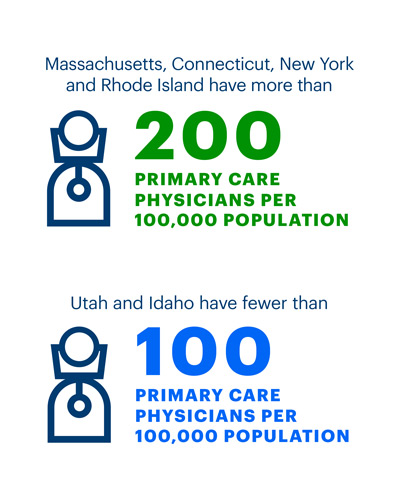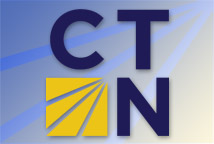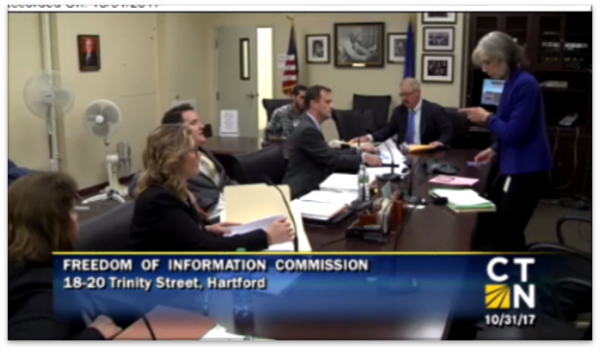Insurance Department Recovers Almost $7 Million in 2017, Nearly Even with Previous Year; Industry Fines Increase
/The Connecticut Insurance Department recovered nearly $7 million for policyholders and taxpayers in 2017, helping individuals, families and employers with their claims and complaints. That’s slightly less than the $7.5 million recovered in 2016, but higher than the $6 million that was recovered for policy holders in 2015. About $2 million in fines were issued against carriers, an increase from $1.6 million and $1.7 million during each of the previous two years.
“Consumers have every right to expect that the promises made to them by their insurance companies will be kept and the Department is here to help them every step of the way. Protecting consumers is our mission and the Department makes certain that carriers adhere to all insurance laws and regulations are followed,” Insurance Commissioner Katharine L. Wade said. “We assist thousands of consumers every year who have brought their questions and concerns to us.”
The Department’s Consumer Affairs Unit (CAU) fielded 5,800 complaints and inquiries in 2017 and helped policyholders recoup nearly $4.8 million from January 1 to December 31, 2017. Also in 2017, the Department’s Market Conduct Division levied approximately $2 million in fines against carriers and returned that money to the state’s General Fund. The fines resulted from a variety of violations and settlements ranging from untimely claim payments to improper licensing.
The majority of the funds recovered for policyholders stemmed from complaints over health, accident, homeowners and life and annuities policies. The following is the breakdown of funds recovered in 2017:
- Accident, Health - $2.9 million
- Auto - $584,200
- General Liability - $101,000
- Homeowners and Commercial Property - $344,600
- Life, Annuities - $739,000
- Miscellaneous - $89,000
A year ago, in 2016, the Department’s recoveries were somewhat higher than in 2017 - recovering $7.5 million for policyholders and taxpayers. The Department’s Consumer Affairs Unit (CAU) fielded more than 5,800 complaints and inquiries during the year.
In 2015, there were more consumer inquires and complaints, which resulted, however, in a lower total of money recovered with the department’s assistance. The department recovered approximately $6 million for policyholders and taxpayers in 2015, when the majority of the funds recovered for policyholders stemmed from complaints over health, accident, homeowners and life and annuities policies. That year, the Department’s Consumer Affairs Unit (CAU) fielded more than 6,100 complaints and inquiries.
Officials explained that the Department calculates its consumer recoveries based on what the policyholder received as a result of the Department’s intervention. The inquiries and complaints also help the Department identify industry trends that may adversely affect consumers and trigger investigation by the Market Conduct division, they added.

The Insurance Department also highlighted three matters that were dealt with during 2017 which resulted in recoveries for policy owners.
- When an individual who had health coverage through his employer complained about being overcharged for a visit to the emergency room, intervention by the Department’s Consumer Affairs Unit resulted in corrective action not only for that individual but for nearly 200 people whose employers used that same health insurance company for their health plans. The Department required the carrier to review similar claims for that plan, resulting in $47,000 in total recoveries for those affected individuals. As a result, the Department’s Market Conduct Division is investigating to determine if this was an isolated incident or is a systemic issue with the carrier.
- The Department intervened when a family was denied a $100,000 death benefit because the life insurance company said the deceased had pre-existing health issues that disqualified the payment. The Department determined the company issued the policy without first looking into the individual’s health history despite having the opportunity to do so and therefore was obligated to make good on the claim. The family received the full death benefit plus interest.
- The Department helped expedite a damage claim for a widow who was trying to get her husband’s gravestone replaced when it was one of several damaged by a car that crashed in a cemetery. The auto insurance company for the driver had the claim for three months but once the Department got involved, the carrier settled it within 10 days and paid nearly $30,000 to repair the cemetery damage.
Complaint data also help determine topics for consumer education and serve as tools to help the Department monitor the industry, officials noted. The Market Conduct enforcement actions are posted on the Department’s website at www.ct.gov/cid.



 According to “The State of Languages in the U.S.: A Statistical Portrait,” Connecticut was one of seven states, along with New Jersey, Pennsylvania, Maryland, Vermont, New Hampshire and Wisconsin, where more than 30 percent of K-12 students were enrolled in language. As of 2014, only twelve states had more than one in four elementary- and secondary-school students studying languages other than English.
According to “The State of Languages in the U.S.: A Statistical Portrait,” Connecticut was one of seven states, along with New Jersey, Pennsylvania, Maryland, Vermont, New Hampshire and Wisconsin, where more than 30 percent of K-12 students were enrolled in language. As of 2014, only twelve states had more than one in four elementary- and secondary-school students studying languages other than English.
 Carrie Saxon Perry was the first black woman to be elected mayor of a major New England city – in 1987. Milner was the first black mayor in all of New England, elected in Hartford in 1981. There hasn’t been a black mayor leading the Capitol City since Saxon-Perry’s term ended in 1993.
Carrie Saxon Perry was the first black woman to be elected mayor of a major New England city – in 1987. Milner was the first black mayor in all of New England, elected in Hartford in 1981. There hasn’t been a black mayor leading the Capitol City since Saxon-Perry’s term ended in 1993. Across the country, Jacksonville, Memphis, Philadelphia and San Antonia had black mayors until recently, Governing reported. Detroit elected its first white mayor in 40 years in 2013. The nation’s largest cities – New York, Los Angeles and Chicago – have each has one black mayor, years ago. Atlanta elected a black female as mayor in a run-off election, winning with just over 50 percent of the vote.
Across the country, Jacksonville, Memphis, Philadelphia and San Antonia had black mayors until recently, Governing reported. Detroit elected its first white mayor in 40 years in 2013. The nation’s largest cities – New York, Los Angeles and Chicago – have each has one black mayor, years ago. Atlanta elected a black female as mayor in a run-off election, winning with just over 50 percent of the vote.


 The consolidation plan was subsequently approved by the Board of Regents of CSCU in December, with only one member of the Board abstaining and others unanimously supporting the plan, developed to save money across the system by eliminating staff positions, many said to be duplicative, that would not adversely impact students. Student and faculty groups at the campuses have raised questions about the ultimate effectiveness of the plan, or have opposed it outright.
The consolidation plan was subsequently approved by the Board of Regents of CSCU in December, with only one member of the Board abstaining and others unanimously supporting the plan, developed to save money across the system by eliminating staff positions, many said to be duplicative, that would not adversely impact students. Student and faculty groups at the campuses have raised questions about the ultimate effectiveness of the plan, or have opposed it outright.

 Compared with other states, the percentage of women in Connecticut’s legislature has been dropping, in real numbers and as compared with other states. In 2015, the percentage was 28.3 percent; in 2013 it was 29.4 percent; in 2011 Connecticut’s legislature was 29.9 percent women. In 2009, Connecticut’s legislature included 31.6 percent women, which was the seventh highest in the nation.
Compared with other states, the percentage of women in Connecticut’s legislature has been dropping, in real numbers and as compared with other states. In 2015, the percentage was 28.3 percent; in 2013 it was 29.4 percent; in 2011 Connecticut’s legislature was 29.9 percent women. In 2009, Connecticut’s legislature included 31.6 percent women, which was the seventh highest in the nation.
 The model reflects that determinants of health directly influence health outcomes. A health outcomes category and four categories of health determinants are included in the model: behaviors, community & environment, policy and clinical care.
The model reflects that determinants of health directly influence health outcomes. A health outcomes category and four categories of health determinants are included in the model: behaviors, community & environment, policy and clinical care.

 The article points out that “the connection between climate change and hurricanes has become hard for anyone to ignore.”
The article points out that “the connection between climate change and hurricanes has become hard for anyone to ignore.”

 CPAN’s most recent contact expired in September, was extended through October, and was on a day-by-day basis this week. The 33-person staff worked with an annual operating budget that was unexpectedly reduced by
CPAN’s most recent contact expired in September, was extended through October, and was on a day-by-day basis this week. The 33-person staff worked with an annual operating budget that was unexpectedly reduced by 
 Among the panelists will be former Senate President Pro Tempore Don Williams, former House Speaker James Amann, former Senate Minority Leader John McKinney, and former House Minority leader Lawrence Cafero. They will be joined by former House member Tim O’Brien, who served on the Government Administration and elections Committee, and Senate Co-Chair of that committee, Sen. Michael McLachlan.
Among the panelists will be former Senate President Pro Tempore Don Williams, former House Speaker James Amann, former Senate Minority Leader John McKinney, and former House Minority leader Lawrence Cafero. They will be joined by former House member Tim O’Brien, who served on the Government Administration and elections Committee, and Senate Co-Chair of that committee, Sen. Michael McLachlan. A week ago, in an op-ed
A week ago, in an op-ed  Flynn added that the law, passed in 2005, “allows candidates and officeholders to look out for the interests of all their constituents rather than being consumed with the needs of their major campaign contributors. It gives talented, motivated citizens who've never had the money or the connections traditionally required for success in politics a chance to seek and win public office with neither big money nor connections. Now, nearly 80 percent of all candidates for legislative and state offices use the program.” Qualifying candidates must raise $5,000 to $250,000 — depending whether they are seeking a statewide office or legislative seat — in $100 increments or less in order to receive a grant of public funds from the CEP.
Flynn added that the law, passed in 2005, “allows candidates and officeholders to look out for the interests of all their constituents rather than being consumed with the needs of their major campaign contributors. It gives talented, motivated citizens who've never had the money or the connections traditionally required for success in politics a chance to seek and win public office with neither big money nor connections. Now, nearly 80 percent of all candidates for legislative and state offices use the program.” Qualifying candidates must raise $5,000 to $250,000 — depending whether they are seeking a statewide office or legislative seat — in $100 increments or less in order to receive a grant of public funds from the CEP.



























